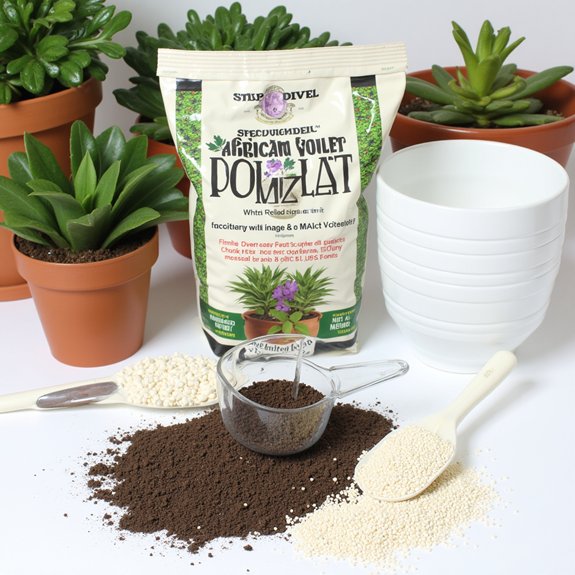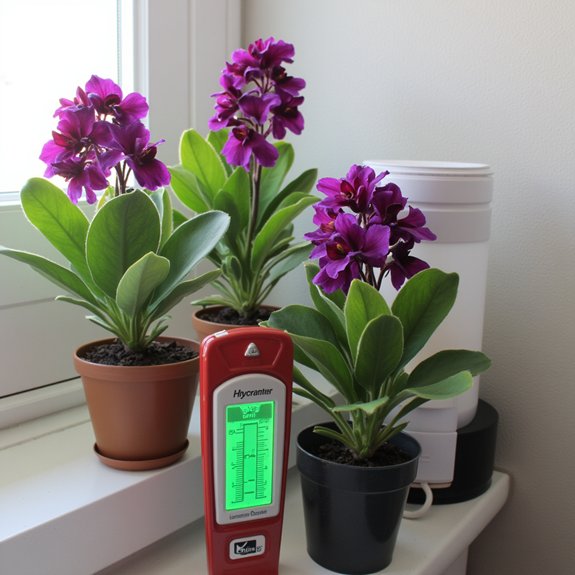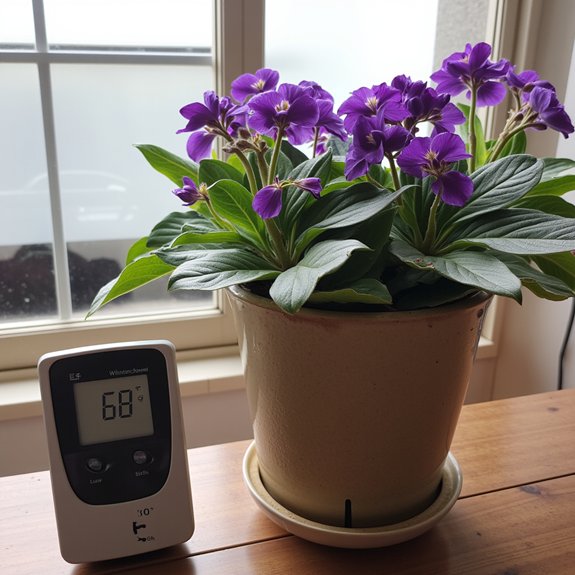Most people don’t realize that African violets actually originated from the rocky cliffs of Tanzania and Kenya, where they’ve adapted to very specific environmental conditions that must be replicated indoors. These delicate beauties aren’t just finicky houseplants—they’re precision instruments that respond dramatically to subtle changes in their care routine. When growers master the exact light duration, soil composition, and watering rhythm these plants crave, the transformation from sparse bloomer to flowering powerhouse happens faster than expected.
Contents
- 1 Selecting the Perfect Pot and Growing Medium
- 2 Providing Optimal Light Conditions
- 3 Managing Humidity and Air Quality
- 4 Proper Watering Techniques
- 5 Temperature Control and Environmental Stability
- 6 Fertilizing for Healthy Growth and Blooms
- 7 Maintenance Through Pruning and Pest Prevention
- 8 Repotting and Long-term Plant Care
Selecting the Perfect Pot and Growing Medium

When choosing a container for African violets, gardeners must prioritize drainage over aesthetics to prevent the root rot that kills these finicky plants. Multiple drainage holes aren’t optional—they’re essential for survival. Pot size matters more than most realize; African violets actually prefer being slightly root-bound, so smaller containers work better than oversized ones.
Soil composition determines success or failure. Garden soil’s too heavy, and regular houseplant mixes won’t cut it. The ideal blend combines equal parts peat moss, perlite, and vermiculite, creating the light, airy texture these plants crave for maximum growth and consistent blooming.
Providing Optimal Light Conditions
Although African violets originated in the dappled light of East African forests, they’ve adapted beautifully to indoor conditions that mimic their natural habitat. Light intensity matters greatly—they need bright, indirect sunlight rather than harsh direct rays that can scorch their delicate leaves.
East or west-facing windows work best, with sheer curtains filtering any intense sunlight. Light duration is equally important for blooming success. These plants require 10-14 hours of brightness daily, followed by 8 hours of complete darkness to trigger their flowering cycle. Consistent lighting schedules help maintain their natural rhythm and encourage those coveted colorful blooms.
Managing Humidity and Air Quality

Two critical factors determine whether African violets will thrive indoors: humidity levels and air circulation. These delicate plants demand 50-70% humidity, considerably higher than most homes provide. While pebble trays offer minimal help, investing in a humidifier creates the rainforest-like conditions these plants crave. However, avoid misting leaves directly, as water droplets cause unsightly fungal spots. Good air circulation prevents stagnant conditions that encourage disease, but keep plants away from heating vents and drafts. Position them where gentle airflow exists without direct exposure to temperature extremes. Balancing these elements mimics their natural African habitat perfectly.
Proper Watering Techniques
Mastering watering techniques becomes much simpler once you understand African violets’ unique preferences. Check the soil’s top inch regularly—when it feels dry, it’s time to water. Bottom watering works best, preventing leaf damage while encouraging healthy root absorption. Fill a tray with room-temperature water, then place your pot inside for 20-30 minutes. This watering frequency typically occurs every 7-10 days, depending on humidity levels. Water quality matters greatly; distilled or rainwater produces better results than tap water. Watch for drought signs like wilted leaves or bone-dry soil, but avoid overwatering—excess moisture causes root rot.
Temperature Control and Environmental Stability

When temperature fluctuations stress African violets, they respond by dropping buds, yellowing leaves, or refusing to bloom entirely. Maintaining steady temperatures between 70°F to 80°F during the day creates ideal growing conditions. Nighttime temperatures can drop to 65°F without causing harm.
Avoid placing plants near heating vents, air conditioners, or drafty windows where sudden changes occur. These temperature fluctuations shock the plant’s system, disrupting normal functions.
Seasonal adjustments matter too. Winter heating systems dry air while creating hot spots, so relocate plants away from heat sources. Summer air conditioning creates similar challenges, requiring careful positioning for consistent environmental stability.
Fertilizing for Healthy Growth and Blooms
Beyond creating the perfect environment, your African violet needs proper nutrition to produce those coveted colorful blooms. Fertilizer types designed specifically for African violets work best, though balanced houseplant options suffice. Look for formulations with higher phosphorus content to encourage flowering, while maintaining proper nutrient balance across nitrogen, phosphorus, and potassium.
Feed your plants every 2-4 weeks during spring and summer when they’re actively growing. Use quarter-strength liquid fertilizer to prevent burning delicate roots. Room temperature water mixed with fertilizer prevents shock, and bottom watering guarantees even distribution throughout the soil.
Maintenance Through Pruning and Pest Prevention
Although proper feeding establishes the foundation for healthy African violets, regular maintenance through pruning and pest monitoring keeps them thriving long-term. Effective pruning techniques involve removing dead or yellowing leaves with clean, sharp scissors to prevent disease transmission. Cut back leggy growth every few weeks to encourage bushier development and better air circulation.
Pest identification requires weekly inspections for common culprits like aphids and spider mites. Look for telltale signs: webbing, discolored leaves, or tiny moving specks. When pests appear, treat immediately with insecticidal soap or neem oil to prevent widespread damage to your violet collection.
Repotting and Long-term Plant Care
Even with meticulous pruning and pest control, African violets eventually outgrow their containers and need fresh soil to maintain peak health. Repotting frequency should occur every 6-12 months during spring or summer when plants are actively growing. Choose a pot that’s only slightly larger than the current one, since these plants prefer being root-bound.
Fresh soil composition matters tremendously for long-term success. Use the same light, airy mix of equal parts peat moss, perlite, and vermiculite that originally worked well. This refreshes nutrients and prevents soil compaction that restricts root growth and flowering potential over time.
